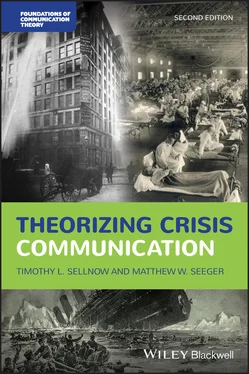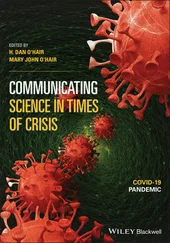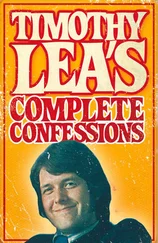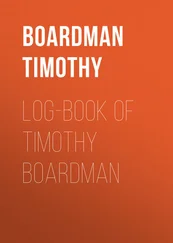1 ...8 9 10 12 13 14 ...22 While the conceptual distinction between theory and practice has been part of an ongoing discussion in research communities, communication scholars have begun to question this distinction (see Barge & Craig, 2009; Eadie, 1990; Petronio, 1999). Several emerging communication traditions – including applied communication, engaged scholarship, action research, translational research, and value-based scholarship, among others – seek to both understand and apply communication inquiry to solve problems, engage issues, and address social inequities (Seeger, 2009). This movement has been driven by the ongoing recognition that communication processes are necessary to address a variety of social problems and issues. This includes the management of risks and crisis events. The group of researchers developing N95 decontamination protocols described earlier turned to communication researchers to develop methods for effectively disseminating their protocols. The development of practical theories of communication has been “explicitly designed to address practical problems and generate new possibilities for action” (Barge & Craig, 2009, p. 95). As such, they hold a specific relevance to crisis communication.
One example of a practical theory that emerged from observations during crises is the Waffle House Index. This index was derived from observations by employees of the Federal Emergency Management Agency (FEMA) regarding the severity of a crisis and the ability of local Waffle House restaurants to stay open. This restaurant chain has an established record of good emergency preparedness and is generally able to continue operations except during the most extreme weather events. Thus, a full menu, a limited menu, or restaurant closure is a general indication of the severity of a crisis (McKnight & Linnenluecke, 2016). The Waffle House Index can be described as a theory of crisis severity and has practical utility as a means to assess the severity of a crisis and what resources a community might need for recovery.
Barge (2001) and Barge & Craig (2009) suggest three broad approaches to the development of practical theories of communication: mapping, engaged reflection, and transformative practice. Mapping takes many forms and is a process necessary to almost all theorizing. It involves creating some form of representation of the reality being examined. Although all theory should bear a direct correspondence to reality, practical theory is perhaps more attuned to the dynamics of the context than other forms. The idea of mapping is that by creating a symbolic abstraction of a system, process, structure, or phenomena allows for understanding of the relationship between the various sub-components. Reflexivity concerns the dialogue that occurs between theory and practice when theory is deployed as a tool for addressing problems and issues. Practical theory is refined, tested, and critiqued based on its utility. Barge & Craig (2009) argue that practical “theory emerges from a systematic reflection on communicative practice in terms of the kinds of problems, dilemmas, and sites that people engage in the conduct of their lives and how they manage them” (p. 59). Finally, transformative practice means using theory to “make sense of situations and take action that is intended to improve those situations.” Theory may be transformative in its ability to fundamentally reframe practice in intentional and strategic ways to achieve desired outcomes. The movement to develop a body of practical theory helps bridge the traditional divide between theory and practice by developing fuller understandings of how the two domains can be productively related. It also downplays the tendency to view theorizing as a more important and valued process than practice. Practical theory may be especially useful as a tool for making strategic decisions under conditions of high uncertainty, such as crises.
Theoretical approaches take a variety of forms. Some of these approaches provide broad conceptual grounding for the object of study. Some are based on observations that become formalized. These approaches can provide unifying orientations and clarify underlying philosophies for a domain of theorizing. They clarify values, the overall purpose of theorizing, and the way scholars think about their work, often described as meta-theories.
Meta-theory represents the underlying philosophy behind a body of theory or the fundamental set of ideas about how a phenomenon of interest in a particular field should be thought about and studied (Wagner & Berger, 1985). Meta-theoretical perspectives are the fundamental assumptions regarding and domain of study that guide theorizing. It describes what researchers will focus on, how, with what goals, and with what outcomes. A meta-theoretical perspective identifies the problem(s) to be addressed by theory (see McPhee, 2000). A meta-theoretical perspective of a phenomenon can be described using four broad concepts: ontology, axiology, epistemology, and methodology. Ontology concerns the nature of the reality being examined. Epistemology concerns the character of knowledge about a particular domain of inquiry and asks questions such as how do we know what we know, what can we know, and what counts as legitimate knowledge. Value questions, including aesthetic, ethical, and broader utility, are addressed by axiology. Domains of inquiry may have intrinsic value and may be seen as worthwhile based on the outcomes they achieve. Finally, methodology concerns the accepted epistemologies of the field and the established ways of conducting inquiry. A meta-theoretical approach to crisis communication addressed these four elements (see Table 2.1).
We discuss the traditions of crisis communication inquiry throughout this book. The dominant method of crisis communication research is the case study, largely because of the challenges of collecting data around disasters. Case studies employing thick description, rhetorical analysis, content analysis, interviews, formal reports, and media accounts are useful in capturing the dynamics of a crisis. Other approaches, especially survey research and laboratory investigations, have also become increasingly important methods for crisis communication investigations. The epistemology of crisis communication is grounded in a view that theory should be contextually relevant. That is to say, any theory of crisis communication should account for the essential elements of the crisis context, including uncertainty, immediacy, and harm. Diverse kinds of knowledge can provide insight into the conditions of a crisis. This includes experiences and personal accounts, empirical and qualitative data, and critical analyses. Much of crisis communication theory is particularly attuned to those individuals, groups, organizations, and communities suffering harm. Some theories privilege organizational harm while others privilege the harm to individuals. Several theories described in the following chapters can be critiqued on the grounds that they have a managerial bias because of the tendency to privilege organizations. The axiology of crisis communication has been driven largely by questions of ethics especially as they relate to rights of individuals to have access to information and the duty to help and care for those who face harm. The concepts of significant choice and autonomy concern the rights of individuals to have access to information about matters that might impact them (Ulmer & Sellnow, 1997). Beneficence and the ethic of care concern the obligation to care for those harmed in ways that are beneficial to their needs (Egilman, 2006). Finally, the ontology of crisis communication focuses on the reality of crisis, especially as experienced by those most directly impacted. As we have noted in Chapter 1, a crisis creates high uncertainty, a threat, and the need for an immediate response. A crisis often engenders intense feelings of fear, dread, anxiety, and uncertainty. The reality of crisis often involves confusion, chaos, disruption, and the lack of normalcy.
Читать дальше












